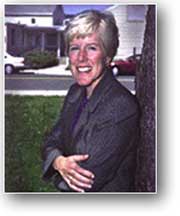
Community involvement key to a lab’s success
If you can’t trust your neighbors, who can you trust? Never was that adage more appropriate than for Brookhaven National Laboratory during the mid 1990s when plumes of volatile organic compounds were discovered in groundwater near the Lab.Compounding the matter for Brookhaven officials, in 1997 residents in Upton, N.Y., where Brookhaven is located, learned that a tritium leak into groundwater beneath the lab’s High Flux Beam Reactor had gone undetected for over a decade.
Department of Energy officials cancelled the contract of the consortium of universities that had managed Brookhaven National Laboratory since its inception. The new contract company, Brookhaven Science Associates, instituted a series of changes aimed at working closely with stakeholders and winning back the trust of their neighbors.
At 1:15 p.m. next Monday, Margaret Lynch will deliver "The Brookhaven Story" in a colloquium in the Administration Building Auditorium at Technical Area 3. The talk is open to Laboratory badgeholders.
Lynch is Brookhaven’s assistant laboratory director for community involvement, government and public affairs. In this capacity, she has responsibility for lab communications, community involvement, government relations, media and science education.
The Brookhaven Story will detail how Brookhaven officials turned a crisis into an opportunity to improve the Brookhaven's standing in the community. Lynch, who is at Los Alamos along with Kathleen Geiger, manager for community involvement at Brookhaven, will talk about the steps the lab took to respond to community concerns, the commitment of lab directors and its management team to improving communication between the community and Brookhaven and the integration of community relations and communications functions.
While at Los Alamos, Lynch and Geiger will receive briefings on Lab programs, tour several Lab facilities and consult with Laboratory organizations about communication issues.
In July 2001, Lynch authored a case study on conflict resolution using the crisis at Brookhaven. The case study, "Conflict Resolution: Building Relationships with Adversarial Publics,"talks about the culture change required at Brookhaven to involve the community in that lab’s operations and the groundwork required to improve communications.
The case study notes that Brookhaven established a community advisory council, an independent community advisory group that included elected officials and regulators from local, state and federal government. The council makes recommendations to Brookhaven and helps the lab develop consensus on lab issues.
Brookhaven, which differs in a number of ways from Los Alamos, also has created stakeholder working groups and task forces to examine lab issues and uses other public forums to continuously reach out to the community, according to the case study.
The case study noted that as a result of the community involvement initiatives, Brookhaven has improved its relationship with local communities. The net effect also has been that projects and programs are "more likely to be implemented on time and on budget, the culture of the Lab has been enriched and the community is working in partnership with the Laboratory to obtain much needed funds for Laboratory environmental management and research programs."
For more information on Lynch’s talk, call John Bartlit of the Community Relations Office (CRO) at 5-6785.
